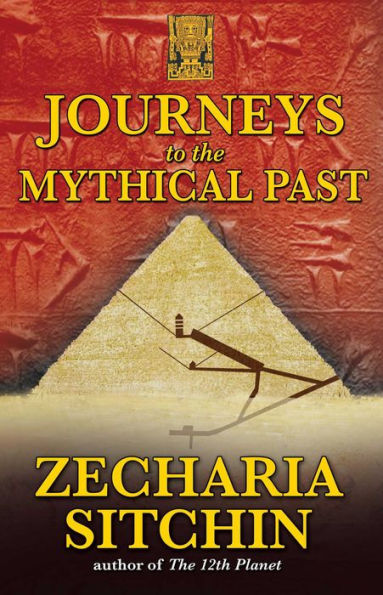Read an Excerpt
Chapter 1
The Great Pyramid Forgery
Spending weeks at a time in the British Museum Library in London, poring over countless books on the Giza pyramids backwards—from the latest to the earliest, I found that all the textbooks reported that Herodotus, the Greek historian-geographer, was told by his guides that the Great Pyramid was built by Khufu when he visited Egypt in the fifth century B.C. Some textbooks asserted that the royal name of Khufu was actually found inscribed within the Great Pyramid; they also used to state that a coffin lid bearing the name “Menkaura” was discovered inside the Third Pyramid. Could anyone argue with that?
The fact that later textbooks ceased referring to the information about the Menkaura coffin lid intrigued me. Why was such physical evidence no longer mentioned? Searching for an answer in issues of scholarly journals, I unearthed the whole story. The original find was made in 1837 by two Englishmen who resifted debris inside the Third Pyramid. Textbooks accepted this as proof of the pyramid builder’s identity for more than a century—until modern carbon dating methods established that the coffin lid was not from 2600 B.C. but from circa 660 B.C. (when a later Pharaoh also called himself Menkaura).
The 1837 “find” was therefore dropped from textbooks (and the British Museum removed the coffin lid from its catalogue); but the circumstances intrigued me. Why did all previous explorers inside this small pyramid miss the remarkable physical evidence? Did the “finders” perpetrate a deliberate archaeological fraud? Their names, I learned, were Howard Vyse and John Perring; they were quite a team, excavating almost at will in Giza. Then, joined by a wheeler-dealer named J. R. Hill, it was the same Howard Vyse who discovered the name “Khufu” written inside the Great Pyramid, where—you guessed it—none was found before . . .
Howard Vyse was a retired British colonel, who, visiting Egypt in 1835, became infatuated with Egyptian antiquities. Though the exploration permit that was issued to Vyse by the Egyptian authorities named the British Consul in Cairo (a Col. Campbell) as a trustee, Vyse made his own hiring decisions; and in Giza he entrusted the search to one Battista Caviglia, who made important finds at the Sphinx and assured Vyse that discovering the elusive hidden Treasure Chamber in the Great Pyramid was just a matter of time and money. Vyse also enlisted a mix of helpers— some with Egyptological experience (such as C. Sloane and J. Perring) and some local wheeler-dealers (a Mr. Hill, a Mr. Mash, a Mr. Raven).
A detailed day-by-day diary that he kept records the desperation as nothing worthwhile was found. As the year 1837 began and his funds were running out, the frustrated Vyse started to use gunpowder in order to blast his way inside the Great Pyramid; he hired an English stonemason, who had come to Egypt for an eye hospital project, to handle the detonations.
His last resort was narrow spaces above the King’s Chamber, one of which (“Davison’s Chamber”) was discovered by Nathaniel Davison in 1765. The gunpowder blasts revealed that there was a cavity above Davison’s Chamber; forcing his way up, Vyse discovered a similar space above Davison’s. Like Davison’s, it was totally devoid of any decoration or inscription. Vyse named it Wellington’s Chamber in honor of his favorite war hero and had his assistant Hill inscribe this name inside the narrow chamber with red paint. Continuing the use of gunpowder as his men moved further up, Vyse discovered two more similar empty spaces; he named them in honor of Lord Nelson and Lady Arbuthnot—names recorded by Mr. Hill in the usual red paint. Then he reached the vaulted cavity at the top, naming it Campbell’s Chamber in honor of his consular patron.
All the “chambers of construction” (as he called them—they are now called “Relieving Chambers”) were bare and empty—no Pharaonic remains, no treasure—just black dust on the uneven floors. But on re-entering the chambers, “quarry marks” in red paint were noticed.
It was in those days of despair and desperation that a major discovery was made that assured Vyse’s place in the annals of Egyptology: Among the quarry marks were several cartouches that spelled out royal names, including that of Khufu!
As I read the diary entries again, the words “red paint” kept jumping out of the pages—as when Mr. Hill used it to inscribe the names “Lord Wellington,” "Lady Arbuthnot,” “Lord Nelson.” I was struck by a statement in Perring’s own memoirs that the red paint used for the ancient inscriptions “was a composition of red ochre called by the Arabs moghrah which is still in use.” Then Perring added the observation on the paint’s quality: “Such is the state of preservation of the marks in the quarries that it is difficult to distinguish the work of yesterday from one of three thousand years” (emphasis mine). Was he voicing his own astonishment about how fresh the red paint markings looked—after 4,500 years!—or was he offering an explanation for the odd phenomenon?
As I went back to Vyse’s day-by-day diaries, the entries made clear that the “quarry marks” were not discovered when the chambers were first entered; and that it was Mr. Hill or Mr. Perring—not Vyse himself—who was first to notice the red-paint markings on subsequent visits. And then the thought struck me: Could the team that perpetrated the fraud in the Third Pyramid have also engaged in a forgery inside the Great Pyramid— “discovering” inscriptions where absolutely none had been found before?
Based on Vyse’s own diary entries, the accusing finger pointed to Mr. Hill as the culprit, and I suggested that it was on the night of May 28, 1837 that he entered the pyramid with brush and red paint and simulated the royal name. The Great Pyramid Discovery was a great fraud, an archaeological forgery.



